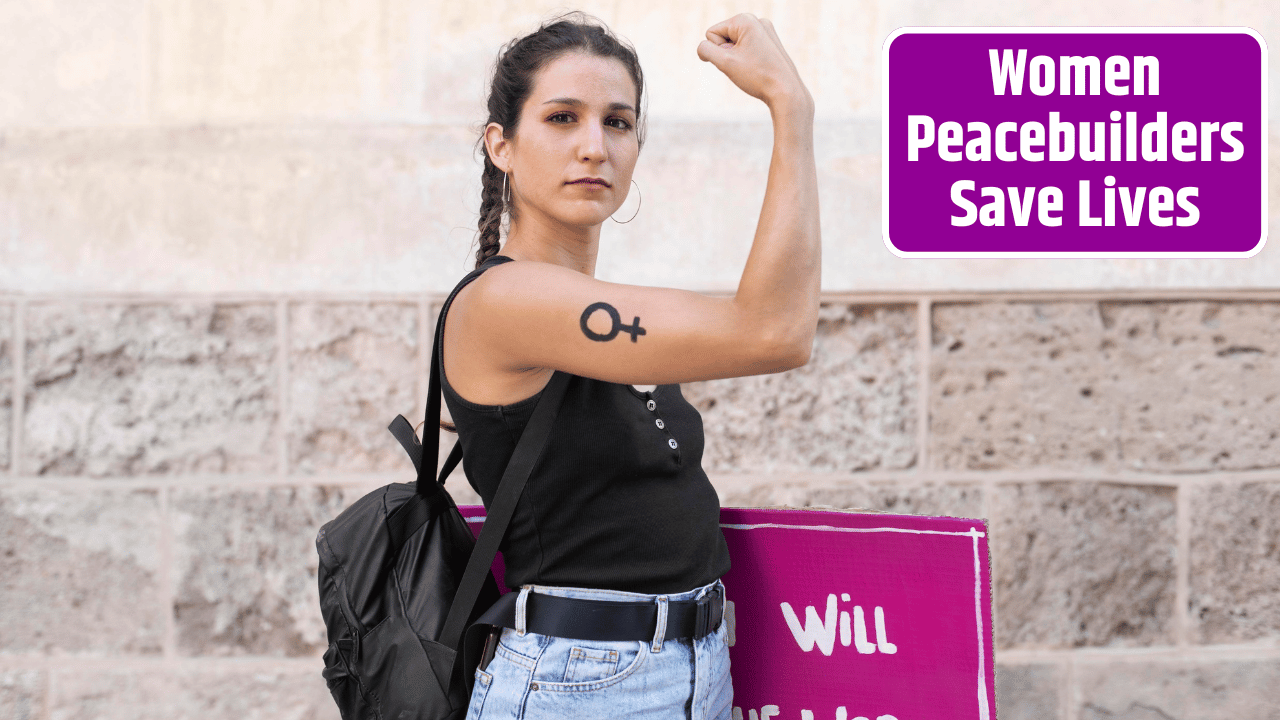You ever notice how the headlines never read: “Women Mediators Prevent Civil War in [Insert Country]”? Nah. That’s not what makes the front page. But the second bombs start falling or negotiations collapse? Suddenly, it’s everybody’s business.
The truth? While the world’s busy watching generals sign treaties and presidents shake hands in front of cameras, it’s often women—quietly, consistently—who are stitching communities back together, long before the diplomats even show up.
So the question isn’t whether women are saving lives through peacebuilding. They are. They’ve been doing it.
The real question is: Why the hell is the world still ignoring them?
Table of Contents
The Unsung Architects of Peace
Picture this. A village torn apart by militia violence. Families hiding, trust broken, schools shuttered. Now imagine a group of women—mothers, teachers, nurses—walking door to door, talking to armed youth, convincing local leaders to lay down weapons, brokering ceasefires, even risking their own safety to negotiate safe zones for children.
It’s not fiction. It’s real life in countries like Liberia, South Sudan, Syria, and beyond. From Leymah Gbowee’s grassroots movement that ended Liberia’s civil war to Syrian women forming local peace councils amid the chaos, women have been central to conflict resolution—just not the kind that gets international press coverage or Nobel nominations. (Well, okay, some do. But only if they’re loud enough to make the world uncomfortable.)
These efforts are hyper-local. Community-led. Often informal. But they’re damn effective.
Numbers Don’t Lie—But Maybe We Do (By Omission)
Let’s throw a few facts on the table:
| Stat | What It Means |
|---|---|
| Women make up <10% of peace negotiators globally | Still treated as accessories, not actors |
| 64% of peace agreements with women’s participation are more likely to last | Longer, stronger peace isn’t accidental |
| Only 0.2% of bilateral aid to fragile states supports women’s organizations | Literally pennies for peace |
So yeah, the numbers speak volumes. We’ve got a system where women are proven to make peace more durable, yet they get a slice of funding barely large enough to buy coffee for the delegation.
It’s not just oversight. It’s neglect. Systemic, structural, and—let’s be honest—rooted in patriarchy.
Why the Blind Spot?
Part of it is optics. Global diplomacy still loves the image of men in suits behind polished desks. Meanwhile, women’s peacebuilding often looks messy. It happens in churches, kitchens, schools, refugee camps. There’s no red carpet. No ceremonial pen.
And because these peace efforts don’t follow the formal script, they get sidelined. But informal doesn’t mean ineffective. It means intimate. Grounded. And often, life-saving.
Plus, let’s not pretend this is a neutral issue. Women who speak up in conflict zones face backlash. Smears. Arrests. Worse. In places like Afghanistan and Myanmar, women peacebuilders are doing this work while literally fearing for their lives—still they persist.
Who’s Listening?
A few folks, thankfully. The UN passed Resolution 1325 (you’ve heard this before) which urges countries to include women in all peace and security efforts. But two decades later, it’s more like a polite suggestion than an enforced rule.
Still, there are success stories:
- In Colombia, women’s groups ensured the 2016 peace deal addressed sexual violence and land rights
- Northern Ireland’s Women’s Coalition pushed their way into peace talks, demanding education and reconciliation be included
- In Rwanda, post-genocide rebuilding has been largely driven by female leaders at every level
These aren’t just feel-good add-ons. They’re structural shifts—when allowed to happen.
What Needs to Change (Besides Everything)?
Here’s what women peacebuilders actually need. Spoiler: it’s not a motivational conference or another “dialogue” panel.
Let’s Keep It Real:
| Problem | Real Solution |
|---|---|
| Underfunding | Direct cash to grassroots women-led orgs. No gatekeepers. |
| No seats at the table | Mandatory gender quotas in peace delegations. Period. |
| Safety concerns | Actual protection for women leaders—on the ground and online. |
| Being sidelined | Recognition of informal peace work as official, policy-worthy action. |
And let’s not forget: peace isn’t just an agreement between governments—it’s about rebuilding lives. That’s where women come in. They’re the ones organizing trauma care, reopening schools, rebuilding economies, re-knitting the social fabric. What diplomat has ever done that?
You want sustainable peace? Start funding the folks who already know how to build it. You want to stop the next war before it starts? Listen to the people who saw it coming and tried to stop it—many of them women.
And maybe—just maybe—stop treating women’s peacebuilding efforts like side quests in the grand narrative of conflict. Because without them, there’s no story left to tell. Just smoke and silence.
FAQs
Why are women peacebuilders more effective in many cases?
Because they work from the ground up. They understand community needs, de-escalate tensions early, and focus on people, not politics.
Aren’t there already women in peace processes?
Some. But they’re often tokenized or ignored. Being in the room isn’t the same as being heard.
How can people support this work globally?
Donate to grassroots women-led peace orgs. Pressure your reps to support international funding. And for God’s sake, amplify their stories.














